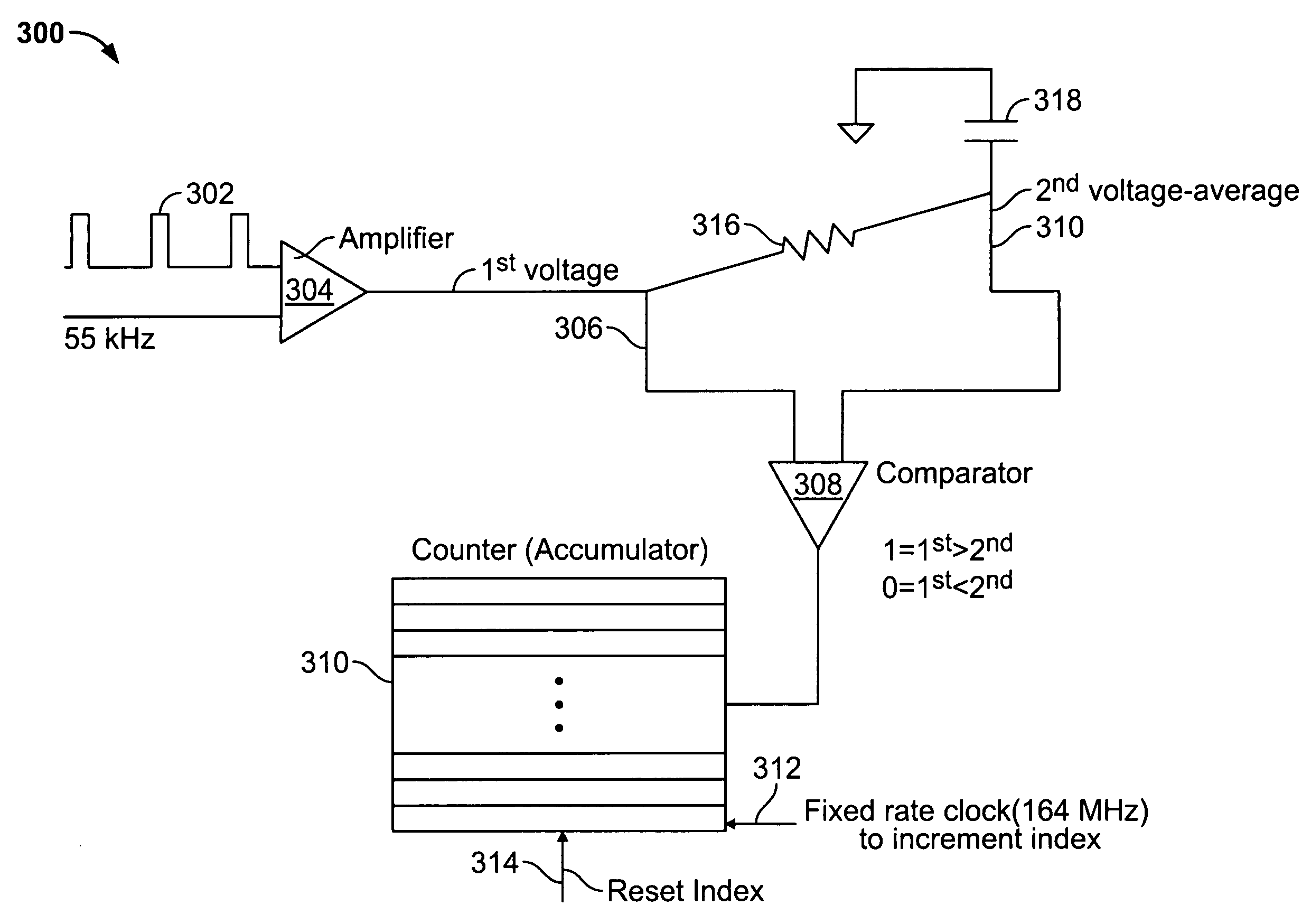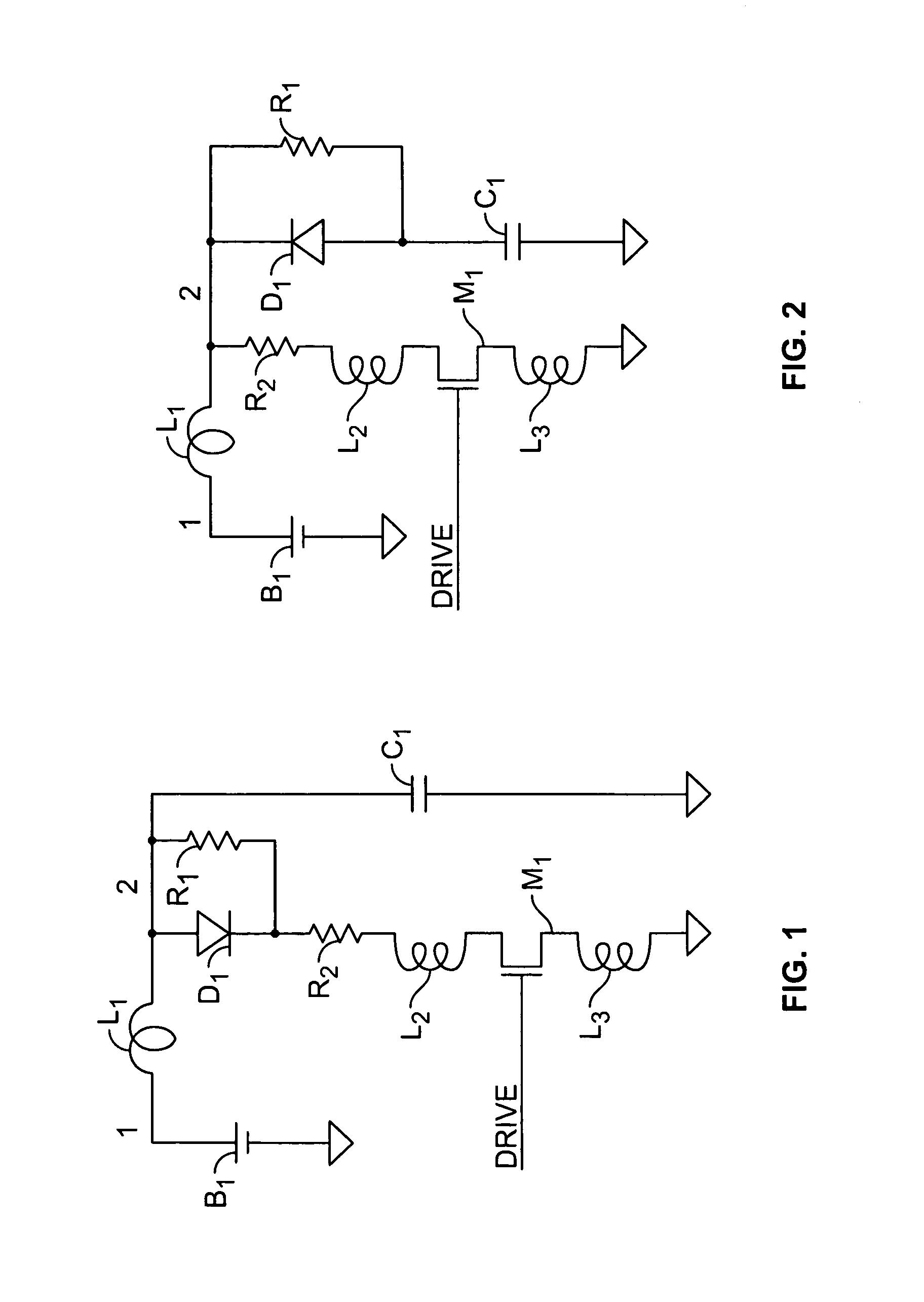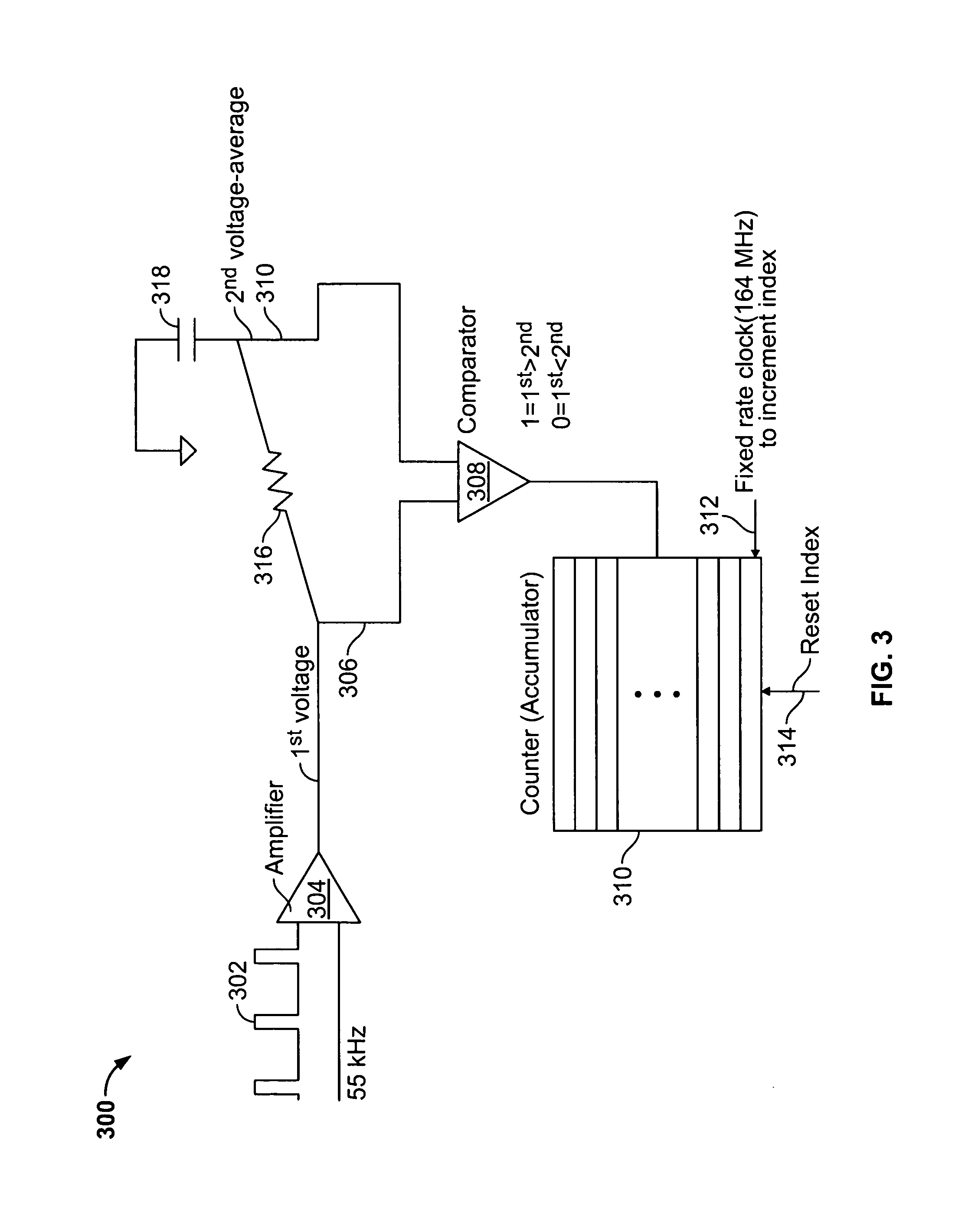Method for improving the received signal to noise ratio of a laser rangefinder
a laser rangefinder and received signal technology, applied in surveying, distance measurement, instruments, etc., can solve the problems of difficult integration of high voltage, high current switching devices along with sensitive receiving circuits into compact units, and large memory requirements to be effective, so as to reduce the effect of noise components, reduce the effect of noise on the receive section, and be convenient to synchroniz
- Summary
- Abstract
- Description
- Claims
- Application Information
AI Technical Summary
Benefits of technology
Problems solved by technology
Method used
Image
Examples
Embodiment Construction
[0009]We first describe, with reference to the circuitry 300 in FIG. 3, a method to improve the signal to noise ratio of a signal received by a laser rangefinder and usable to determine a range to a target. In the FIG. 3 example, a laser is forced to emit a very brief pulse (about 10 nS long) at a rate of about 55 KHz. The laser pulse is reflected off a target, and some of the light is converted to a voltage signal 302 by a photosensor (not shown), and amplified by an amplifier 304. The output of the amplifier 304 is provided as a first voltage signal 306 to a comparator 308. The first voltage signal 306 includes unavoidable photodetector and amplifier noise. An average ambient output of the amplifier 304 provides a second voltage signal 310 to the comparator 308. For example, in the FIG. 3 circuitry, the average ambient output of the amplifier 304 is the result of an RC averaged output, where a resistor 316 is connected to the output of the amplifier 304 and a capacitor 318 is conn...
PUM
 Login to View More
Login to View More Abstract
Description
Claims
Application Information
 Login to View More
Login to View More - R&D
- Intellectual Property
- Life Sciences
- Materials
- Tech Scout
- Unparalleled Data Quality
- Higher Quality Content
- 60% Fewer Hallucinations
Browse by: Latest US Patents, China's latest patents, Technical Efficacy Thesaurus, Application Domain, Technology Topic, Popular Technical Reports.
© 2025 PatSnap. All rights reserved.Legal|Privacy policy|Modern Slavery Act Transparency Statement|Sitemap|About US| Contact US: help@patsnap.com



